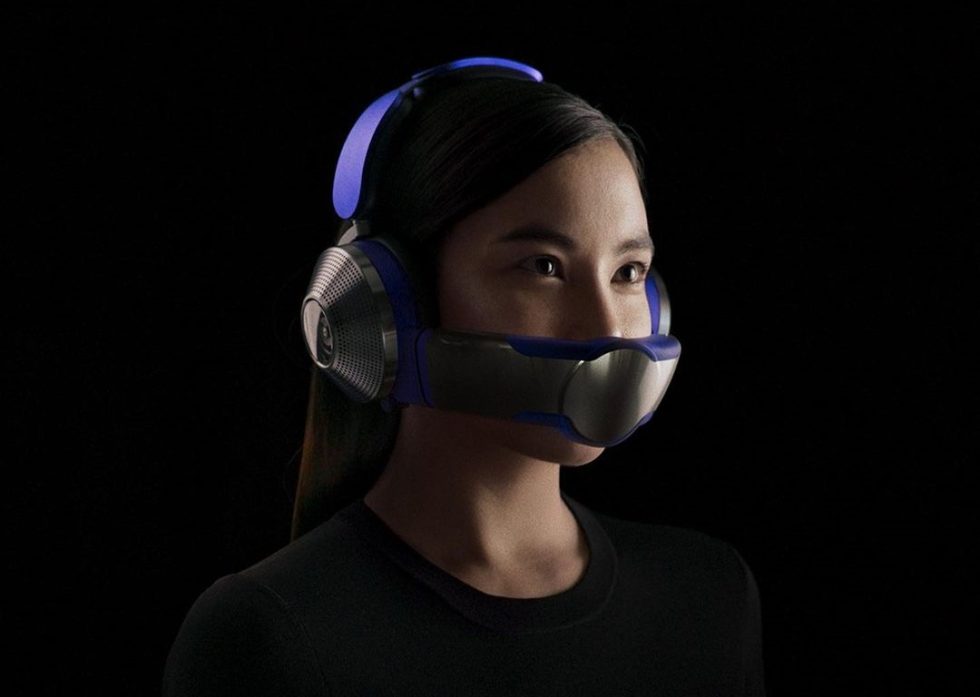Cunning designing psychologists channel — however Ars' central abnormal cover analyzer has concerns.

In a declaration coordinated hazardously near April 1, Dyson affirmed for this present week that it is chipping away at the Dyson Zone, one of the most extraordinary purchaser confronting covers we've at any point seen.
Additionally, the organization chose for consolidate this face-mounted air purifier with its most memorable surrounding sound blocking earphones — which add to the separating system.
Somewhere around one outlet says it tried this ideal expansion to your Mega Man cosplay project, which recommends this is a genuine item and not an April Fool's joke.
Inquisitively, the world's most memorable face-on impressions of the gadget, as given by The Verge, describe the organization's official statement routine prior to getting to the core of why a face-overwhelming framework like the Dyson Zone has us uncertain.
"The Zone earphones are exceptionally enormous and recognizably weighty,"
The Verge's Chaim Gartenberg says, and a solitary glance at this head-mounted framework explains why that may be the situation.
Blower concerns
When a facial covering needs to build up a firmer piece of strong material remotely close to the mouth, jawline, or jaw, it runs unequivocally into the issue of agreeable weight dissemination.
I've done a ton of head-mounted gadget testing at Ars Technica in light of this issue, with my most noteworthy solace score going to the cunning "radiance" development of PlayStation VR and my least grade going, entertainingly enough, to another battery-controlled face filtration framework, the Razer Zephyr.
 Dyson appears to one-up the Zephyr by at minimum utilizing earphones to support its Zone framework with a top-of-head lash and earcups, and Dyson's writing recommends cautious designing to spread load over that tie.
Dyson appears to one-up the Zephyr by at minimum utilizing earphones to support its Zone framework with a top-of-head lash and earcups, and Dyson's writing recommends cautious designing to spread load over that tie.
Be that as it may, not at all like other well known surrounding sound blocking earphones, Dyson's most memorable wound at the item classification incorporates a filtration-centered wind current framework.
This attracts air through dust-explicit channels the earpiece, then, at that point, pipes that air toward the nose and mouth (through a cumbersome looking sets of cheek-lining plastic pieces, which Dyson says don't contact the face) where further filtration is standing by.
As Gartenberg takes note of, this wind current framework requires blowers, and these add weight as well as produce sound that the earphones' commotion crossing out doesn't be guaranteed to counterbalance.
It's indistinct whether the blowers' commotion suppresses a wearer's discourse, which is a significant motivation behind why I don't suggest the original Razer Zephyr.
Furthermore, The Verge's Dyson Zone test didn't explain how rapidly heat produces, either by catching air on the face or from its underlying battery.
For correlation, the Razer Zephyr incorporates a couple of little fans that further develop wind current inside a plastic, cloudy snare; haze and hotness can aggregate without these on, however the subsequent commotion makes discussions troublesome when they're turned on.
An effect method for being let be on the transport
Surprisingly, this head-mounted framework targets air contamination, not viral particulates, as a justification behind day to day use.
What's more, I could see its tasteful being passable when air contamination is important for a public travel drive where clients as of now shut out individuals by means of music or digital recordings.
Be that as it may, Dyson Zone as a matter of course isn't a N95-or KN95-appraised concealing framework because of its "not contacting the face" plan (it has open pathways between the earpiece air consumption and a wearer's nose and mouth).
The best Dyson offers is a different connection to transform the framework into a "appropriate, full-contact" facial covering, Gartenberg reports.
While that will better smooth out the channel's attention on airborne particulates, that doesn't be guaranteed to mean it'll be remotely close to emergency clinic grade after transportation (and its publicizing materials are mindful so as not to recommend so a lot).
Dyson's declaration says the undertaking started in 2016, a long time before the COVID-19 pandemic, as "a snorkel-like clean air mouthpiece matched with a knapsack to hold the engine and internal operations."
Dyson Zone has obviously moved into a less frightening state in the years since, regardless of whether its facial covering darkens the exceptionally significant meaningful gestures of a wearer's mouth.
A similar declaration doesn't recommend we ought to anticipate that further modifications should the model Gartenberg tried before its worldwide send off in "fall 2022."
Once it shows up, the world will actually want to answer whether Dyson Zone's abnormal plan, uproarious channels, and (significantly) Dyson's most memorable convenient sound framework consolidate into something advantageous for contamination attentive suburbanites.








0 Comments
Write a comment if you liked the topic